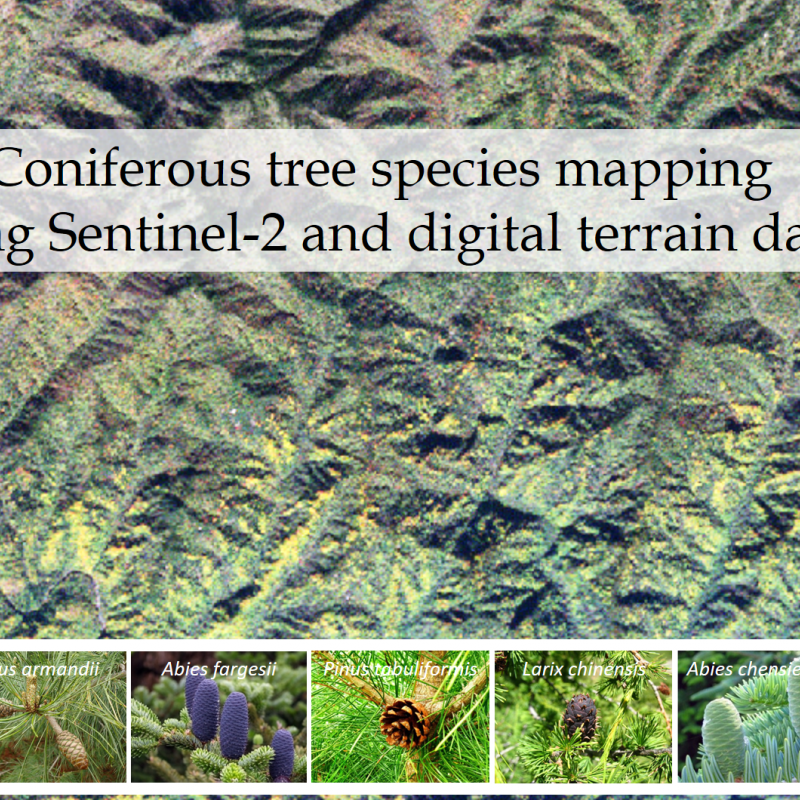Coniferous tree species mapping using Sentinel-2 and digital terrain data

Field work can be organized and carried out in the Foping Giant Panda Nature Reserve in China, but not mandatory.
Coniferous species are present in almost all major vegetation biomes on Earth. Coniferous species have a key role in global ecological processes: a large terrestrial carbon stock is present in the soils and biomass of coniferous-dominated forests. Conifers also have high economic value in the forest industry in the production of softwood lumber and paper, as well as in providing sources for non-wood products. In addition, coniferous forests are important as habitat areas. Many wildlife species rely on coniferous forests and trees as their primary sources of food and shelter. Monitoring coniferous tree species distribution through satellite and airborne remote sensing is active. The use of VHR data is often limited by high data costs. Consequently, most applications that cover large areas have focused on the use of cloud-free mosaics based on freely available satellite data. The high temporal resolution and the inclusion of several red-edge bands in Sentinel-2 data makes it expedient for tree species classification since there is a higher likelihood of capturing images with phenological information and with more spectral information than Landsat 8 and SPOT 5. With the launch of the European Sentinel-2 satellites, data with higher spatial, spectral and temporal resolutions have become available, creating new opportunities for tree species separation at the stand/plot level.
In this study, we propose to use multi-temporal Sentinel-2 data as well as its associated vegetation indices and greenness metrics, in combination with digital terrain data (e.g., elevation, slope and aspect) to mapping seven coniferous tree species in a giant panda habitat – Foping Nature Reserve. The Random Forests machine learning algorithm will be applied for this purpose. The most important predictors and critical time period that contributed to the success of remote sensing of coniferous tree species will be determined.
